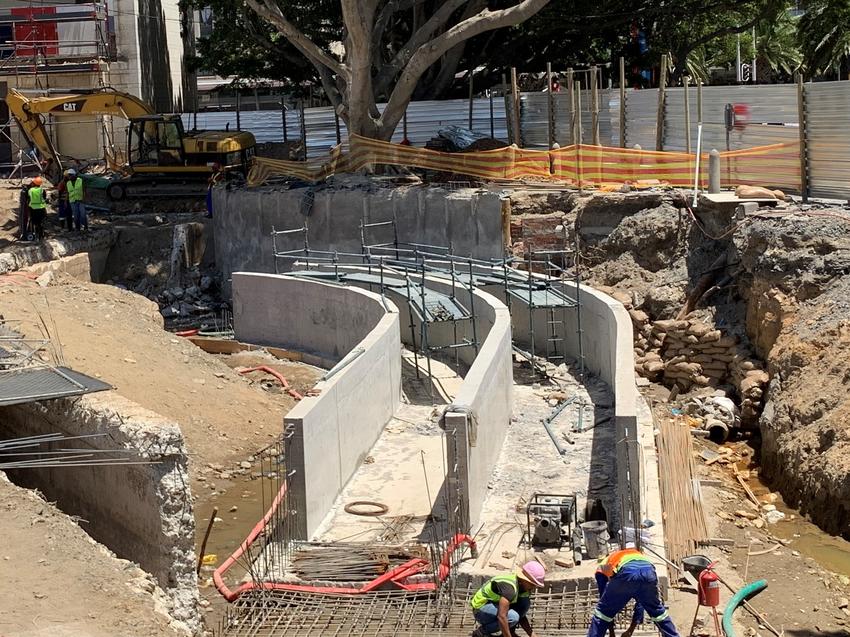The Cape Town railway station in South Africa is undergoing a major transformation, with Keller providing foundations for a 22-storey student accommodation block. We talk to Project Manager Arnold van Taak to find out more.

The R1.3 billion (US$81 million) landmark development – known as Cape Station – will include a 3,085-bed, purpose-built student accommodation block, 6,700m2 of retail space and a new world-class public square with landscaped gardens and artwork to encourage tourist engagement.
Keller’s scope of work consisted of demolishing previous structures, installing new civil services and constructing new foundation piles for the student building. Contracted for all three aspects, Keller was well positioned to manage the interfaces, with multiple work aspects progressing at the same time.
The site itself had limited space, with access changing as the project progressed through various phases, so careful planning and sequencing was particularly important.
Innovative design and a range of piles
“The piling and lateral support works made up the bulk of the contract and were designed in house by our own expert team,” says Arnold. “The scheme had to cater for a variety of load requirements, but thanks to our diverse products, we were able to offer a range of efficient and innovative solutions.”
Optimising the design, Keller came up with four different pile types across seven pile sizes. The majority were driven cast in-situ (also known as Franki piles) – a staple product offered by Keller. This pile type is typically cost effective, has good load-bearing capacity and is well suited to the tricky ground conditions encountered in Cape Town.
“We installed these versatile piles in two variants: compression-only piles and tension / compression piles,” he adds. “The tension capacity was improved by installing a rock anchor into the bedrock below the toe of the pile. This anchor forms an integral part of the pile, enabling it to transfer tension loads to the bedrock during certain seismic occurrences.
“It’s worth noting that we used dedicated piling rigs that take up far less space compared to crane-mounted pile-driving leaders. These are beneficial in projects with space constraints and when there’s other work going on site. This piling method also offers good production rates and really helped us achieve our contracted milestone dates.”
A solution to protect the trees
On the northern site boundary, a new culvert was being constructed, requiring a relatively deep excavation adjacent to existing services and trees. The trees precluded the use of a typical batter slope, anchors or a crane requiring high headroom. To get around these challenges, Keller came up with an alternative to the initial sheet-pile solution using reinforced ODEX piles.
“By installing ODEX piles in a row, socketed into the bedrock, we created a cantilever to support the embankment,” says Arnold. “This innovative solution created a stable slope without the need for anchors, avoiding potential clashes with existing public services. In addition, the equipment it required took up limited headroom, safeguarding the trees.”
In certain areas, structural loads warranted temporary cased auger piles. Again, Keller designed a number of these to work in compression as well as tension. Tension capacity was achieved by retrofitting rock anchors and, in some instances, socketing piles into the bedrock. Where rock sockets were chosen, the resistance to friction enabled tension loads to be transferred into the bedrock.
Versatility and capability
To cap off the project, the team installed a number of micropiles. These piles use smaller rigs that can often fit through narrow doorways and require very little headroom, making them suitable for installing piles inside buildings and below existing floors and ceilings.
Arnold concludes: “All of this work took around seven months to complete and highlights Keller’s versatility and capability – from design to installation – to deliver complex, turnkey geotechnical projects.”